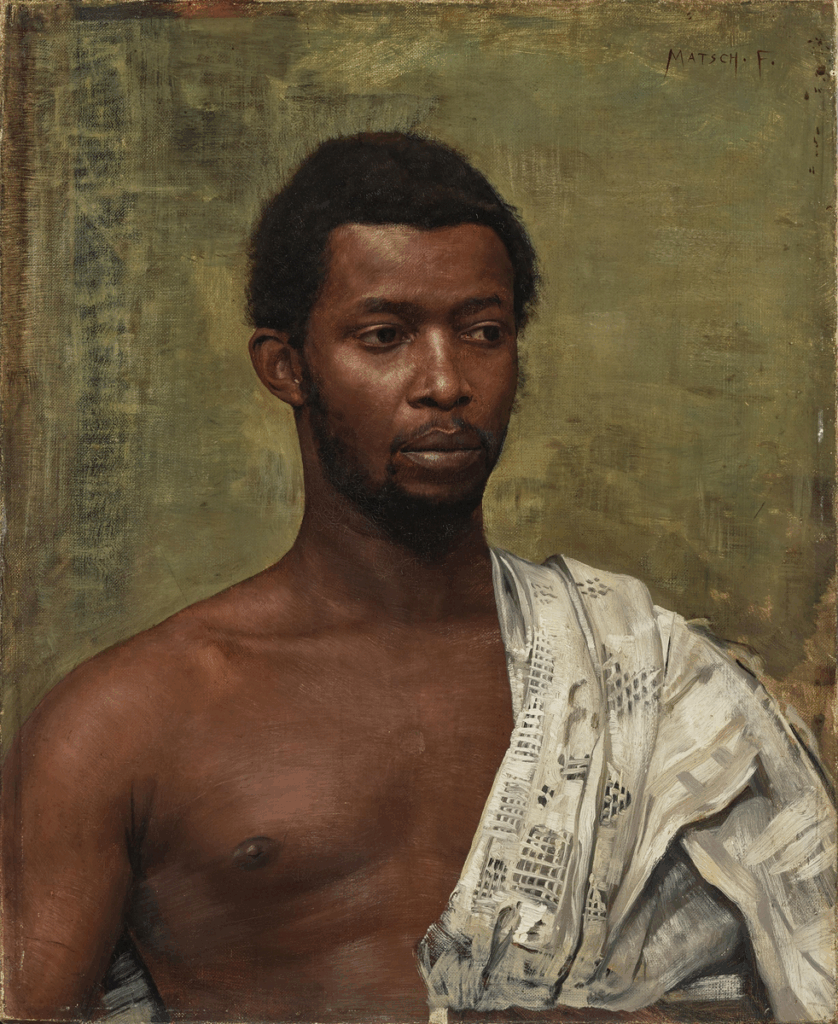Gustav Klimt painted Prince William Nii Nortey Dowuona in 1897, and the work had been considered missing since the 1930s. Recently revealed to have actually been in private Hungarian ownership from the 1950s until 2021, it is now on display at the TEFAF fair in Maastricht, Netherlands.
However, the Hungarian news portal HVG is now asking how it even came to Hungary after 1938 and if it was legally then resold.
Since its rediscovery in mid-March, Klimt’s work has garnered plenty of media attention and was exhibited in New York by Viennese art dealers Wienerroither & Kohlbacher at the U.S. edition of the TEFAF art fair.
Now, allegations are flying that the painting left the country “without the knowledge” of the authority responsible for the protection of cultural property. In other words, according to these accusations, it was smuggled out of Hungary.
According to Der Standard, HVG published research in May that the painting was subjected to scientific examination in 2022 in a specialist laboratory in Budapest. Its director, Zsófia Végvári, published her analyses and results in a blog post in March shortly after the “sensational discovery” became known, thereby highlighting her role in identifying the work. The person who commissioned this examination is currently unknown.
Hungary is known for having comparatively strict export regulations, mandating permits for such works that are not “the property of their creator,” are older than 50 years, and their respective value exceeds HUF 1 million, or the equivalent of approximately €2,500.
HVG asked the responsible ministry whether an export permit had been issued for the Klimt painting or a similar work by an unknown artist between 2020 and 2025. The authority denied this. However, in response to a request from Der Standard, both the Austrian Federal Monuments Office, which was responsible for the re-export permit, and the art dealers Wienerroither & Kohlbacher confirmed the existence of such a permit. “… not subject to authorization.”
The editorial team has a scan of this document, which refers to a total of four works of art. It states that the export of the objects identified by “data and photos” “from Hungary does not require authorization” and that the “export” is therefore “legal without authorization for reasons of monument protection.” Thus, the transfer from Hungary was approved on July 21, 2023.
The document does not indicate when the Hungarian Ministry was originally contacted. According to Wienerroither & Kohlbacher, the owner presented the painting in the spring of 2023 and subsequently confirmed the authenticity of the work to Klimt expert Alfred Weidinger.
At the time of processing, the authority had a color photograph of the Klimt painting and its dimensions, but no information about its provenance or a presumed artist. The inscription “Gustav Klimt Estate,” visible on the painting at shoulder height even before its restoration, may have been overlooked by the cultural heritage conservationists.
According to Wienerroither, it would have been impossible to have identified it as a Klimt before their restoration. “We looked at the painting, it was dirty and also had a bad frame, it didn’t look like Klimt at all,” DW quotes the art dealer as saying.
Hungary’s Ministry of Construction and Transport (ÉKM) presumably allowed the painting to leave the country, with little hope of it ever returning.
The results of the examination in 2022 by the Budapest laboratory are likely not available. In her blog post, Zsófia Végvári mentions not only the “estate stamp,” whose ink “flowed into the painting’s original network of cracks,” but also an interesting detail on the back. There, she says, is the inscription “G. Klimt,” which is invisible to the naked eye but readable in the infrared range.
Until the annexation of Austria by Nazi Germany in March 1938, it was housed in an Austrian collection, specifically that of Ernestine Klein, from whose villa in Vienna-Hietzing the portrait of the African prince, along with other art objects, disappeared under unknown circumstances during the Nazi era.
The current owner of the painting, who is said to have acquired it after 2021, reached an agreement with Ernestine Klein’s heirs in a private restitution settlement, making the sale of the painting possible. The initial estimated selling price is €15 million. According to Wienerroither & Kohlbacher, negotiations are underway with institutional and private buyers. (Olga Kronsteiner, May 20, 2025)
According to the DW article, the prince depicted is the nephew of an Osu king, who had been sent as the head of a group from his tribe that traveled to Vienna at the invitation of the director of the Vienna Zoo in 1897.
Prince William Nii Nortey Dowuona was also painted by Franz Matsch, a work now at in the Musée National d’Histoire et d’Art in Luxembourg.

The post Was this largely unknown and long-missing Gustav Klimt work of a West African prince illegally smuggled out of Hungary? appeared first on Remix News.
Remix News





 T1
T1


